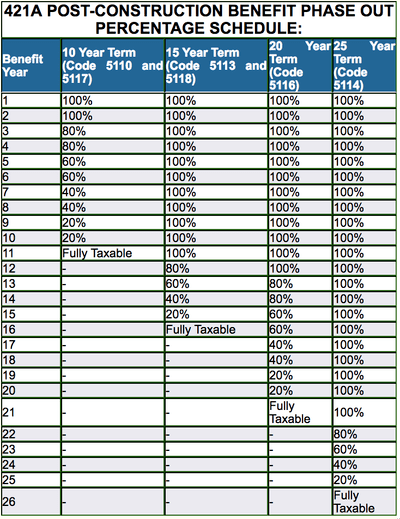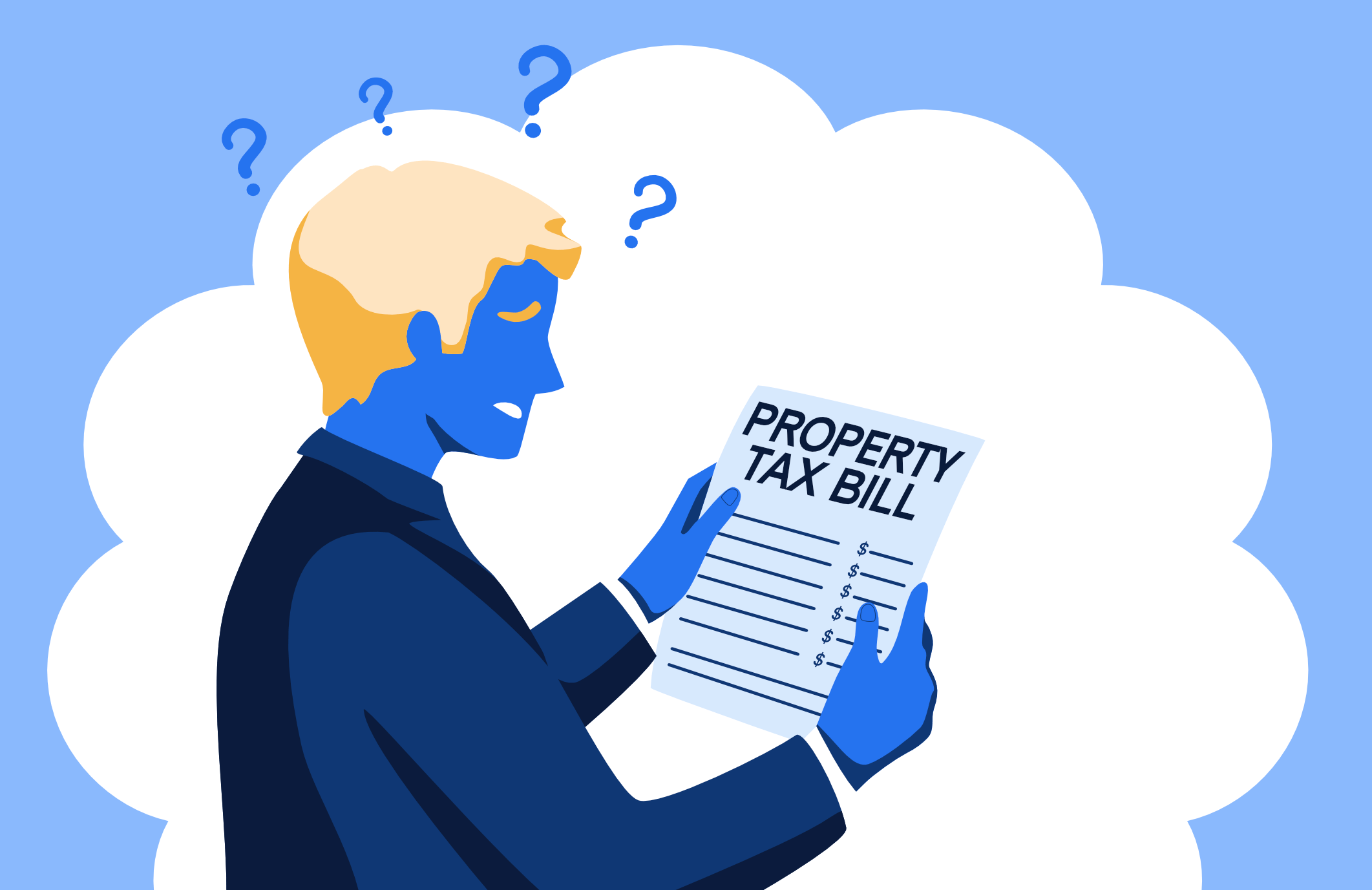If you’re like pretty much everyone on earth and you don’t like taxes, you’ll love 421a tax abatements! Like a lot of things in NYC real estate, they sound simple but get complex and can be dangerous if you don’t watch out. We’ll run you through everything you need to know about 421a tax abatements when you’re looking to buy an apartment in NYC.
What is a 421a Tax Abatement In NYC?
Are There Other Types Of NYC Tax Abatements?
How To Verify A 421a Tax Abatement
Is Buying An Apartment With A 421a Tax Abatement A Good Deal?
What Are The Dangers Of 421a Tax Abatements For Buyers?
What is a 421a Tax Abatement In NYC?
A 421a tax abatement lowers your property tax bill by applying credits against the total amount you owe. It is most commonly granted to property developers in exchange for including affordable housing and the benefit lasts for 10 to 25 years.
The 421a tax abatement got its name from the section of New York Real Property Tax Law establishing it in 1971. They are still the most common type encountered by buyers in today’s market. There are about twice as many buildings with a 421a tax abatement as the next most common type. Anecdotally, we'd say that's an understatement.
To know a building has a 421a tax abatement is only moderately helpful. There are actually four schedules and six different codes within the program. Confused? That’s why we’re here!
In the table below, you’ll see the different schedules. Each percentage is the “benefit” and tells you how much the tax will be reduced due to the abatement so the higher the better.

As you can see, there’s a big difference between a 10 year and 25 year tax abatement. Not only is the 25 year tax abatement longer, the benefit is 100% for the majority of the term.
Don’t worry - we’ll go through an example later but for now, remember that when you hear a property has a 421a tax abatement, your first question should be “Which one?”
Are There Other Types Of NYC Tax Abatements?
While 421a tax abatements get all the attention, there are actually many other types offered by NYC. If you are curious, you can find the entire collection here.
The most important abatement is arguably the “Cooperative and Condominium Property Tax Abatement” which reduces property taxes for apartment owners all over the city. The owner must meet the requirements but with abatements offered between 17.5% to 28.1%, the savings can be significant.
You won’t see the Cooperative and Condominium Property Tax Abatement while apartment shopping since it depends on how the buyer uses the property. You may see a J-51 tax abatement though.
The J-51 program was started way back 1955 after the city mandated that all buildings needed to have basic utilities such as hot water, central heat and even indoor plumbing. A lot of landlords complained they didn’t have the money to add these to their building. In response, the city implemented the J-51 tax abatement program which allowed landlords to recoup about 75% of what they spent on improvements.
Since then, the J-51 program has expanded to cover all sorts of improvements such as elevators, windows, roof work, etc. It was also available when converting commercial or industrial space to residential or a rental building into co-ops or condos.
When you consider which types of owners are eligible for J-51 tax abatements, you start to realize why NYC apartment buyers don’t encounter them very often. They’re either granted to landlords of rental buildings or a very small slice of new apartment supply.
The common thread between all types of tax abatements is they are used by the government as incentives. The 421a program encourages affordable housing, J-51 building improvements and Cooperative and Condominium Property Tax Abatement owner occupied units.

How To Verify A 421a Tax Abatement
Often the only information you’ll see advertised about a 421a tax abatement is that it exists. As we saw in the table above, that can be amazing or irrelevant depending on the details.
Thankfully, with a few helpful tools, you can easily verify a building’s 421a tax abatement.
Please note - in early 2019, the NYC Department of Finance rolled out a new website that does not provide as much information as was previously available. Yoreevo has requested they make the data accessible again. In the meantime, we can piece together some key information.
Let’s use one of Yoreevo’s previous listings, 136 Clifton Place #1B, as an example.
136 Clifton Place had an absolutely incredible 421a tax abatement and we were sure to mention it to all prospective buyers. But what if the buyers wanted to verify it themselves? What public information is available?
The NYC Department of Finance’s website allows you to enter a property’s address and view the available information.
First click on “Benefits - Business & Construction” on the left. Here you will be able to see there is indeed a 421a tax abatement and we are in the 2018-2019 period.
In order to see the type of 421a tax abatement, you need to pull up the most recent property tax bill (also on the left). At the bottom of the tax bill, you will see a line for the abatement as well as its duration, 25 years in this case.

Using the chart above, you can see the schedule of benefits for a 25 year 421a tax abatement. 136 Clifton Place received a whopping 100% benefit for the first 21 years.
The math will not work out perfectly because of the way the calculations are made. In this scenario, despite having a 100% tax abatement, the property tax bill is actually about $71/month compared to the unabated taxes of $734/month. Still pretty good!
However, the new website falls short because we don’t know how far into those 25 years we are. Until the website adds more information, we’ll have make an estimate by looking at when the building was completed. 136 Clifton Place was completed in 2012 so we are about seven years in.
Is Buying An Apartment With A 421a Tax Abatement A Good Deal?
All else equal, an apartment with a tax abatement is better than one without but it's never that simple. Since you'll pay less in property taxes, an apartment with a tax abatement should cost more upfront. But how much more? Is an apartment with a tax abatement worth twice as much as one without one? Probably not. So how much more is it worth?
To keep it very simple, you should look at how much the tax abatement is "worth" by seeing how much of a benefit you will receive. How much will you save on property taxes because of the abatement? Your real estate broker should be able to help you navigate the math. If you’re not well versed in tax abatements, make sure to get help from someone you trust. If you take the blanket approach that all tax abatements are good, you could get into trouble which brings us to...
What Are The Dangers Of 421a Tax Abatements For Buyers?
Take a look at 421a tax abatement table above again. Say you’re looking at a property with a 25 year term abatement (Code 5114). 100% benefits? That’s awesome! Look at the taxes - extremely low!
If you stopped your analysis there, you could be in for a nasty surprise in a few years. If the property is in year 21, taxes are about to jump meaningfully. In fact, within five years, there won’t be any abatement at all.
On top of a higher near term property tax bill, the resale value of the apartment may go down since it no longer screens as having low property taxes.
All else equal, a 421a tax abatement is always good - it’s just a question of how much you pay for it. You need to make sure you know how much you’ll save and for how long to determine how valuable it is.
Tax abatements increase the complexity of valuing a NYC apartment and Yoreevo is happy to help you navigate the process. By combining a tax abatement with a commission rebate, you’ll be saving money left and right! Please contact us to discuss in more detail!
Note: This article is meant to be informational and should not be used as tax or legal advice. If you have any questions about your particular transaction or situation, please contact your accountant or attorney.

